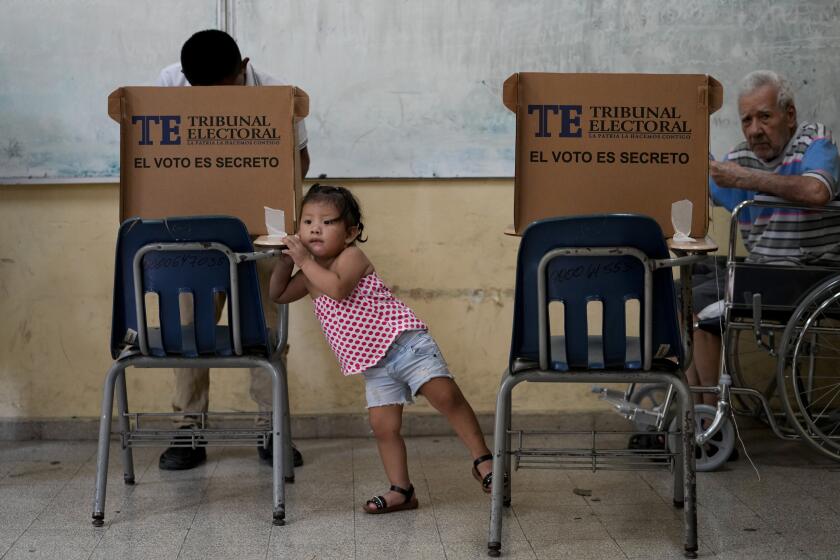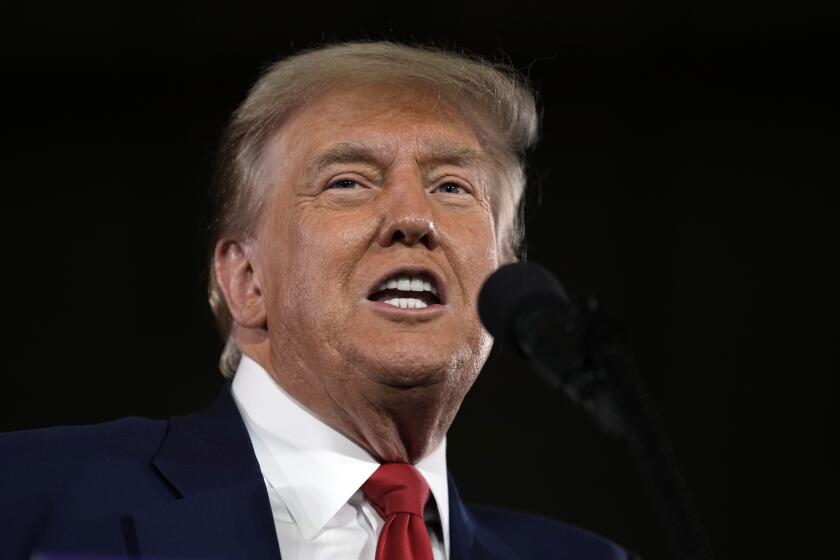Seize the Moment, Avoid a New Vietnam : Afghanistan: In the past, we gave the resistance enough aid to keep up the war. Now we should give them enough to win.
When U.S. Secretary of State James A. Baker III and Soviet Foreign Minister Eduard A. Shevardnadze meet in early February, their discussions will almost certainly touch upon a major geopolitical paradox: While Eastern Europe is slipping out of Moscow’s grasp, the chance to liberate Afghanistan from communism appears to be slipping out of America’s hands.
The Red Army’s withdrawal from Afghanistan last February became the opening round in the collapse of much of the Kremlin’s empire. Yet change in Eastern Europe has outpaced progress in Afghanistan. To secure the Afghan people’s right of self-determination, we need to understand what’s at stake, what’s gone wrong and what needs to be done.
Afghanistan remains a critical strategic issue. Ten years of support to the resistance has been based on a bipartisan recognition that the Soviet occupation threatened U.S. interests in the Persian Gulf. Yet if Washington abandons the resistance, and thereby leaves the Soviet-sponsored Kabul regime in power, Soviet troops will have left but Moscow will still have what the Red Army was sent in to secure: complete domination of Afghanistan.
The Kremlin not only will retain the Afghan air bases that allow Soviet tactical aircraft to reach the Strait of Hormuz but will have also seized the optimal position for long-term subversion of Pakistan and Iran by exploiting the region’s myriad rivalries.
Initial military progress made by the resistance after the Soviet withdrawal has faltered. While the Afghan insurgents control 90% of the countryside and half a dozen provincial capitals, they have been unable to challenge communist control over the major cities.
Resistance forces have had some difficulty making the transition from guerrilla combat to conventional warfare and have suffered from infighting. But the main reason for the current stalemate has been the failure of the United States and other supporters to equip the resistance adequately.
Moreover, the United States and other supporters of the resistance have failed to adjust our assistance to fit the new conventional phase of the war. The equipment appropriate to hit-and-run attacks and ambushes will not meet the requirements of set-piece battles and siege warfare.
To overcome our failures, we must first be clear about our goals. We have had two objectives: the removal of all Soviet forces and self-determination for the Afghan people. The first goal has largely been achieved. But the second depends on removing the Soviet-imposed Najibullah government. To do so, the United States must launch a political and military offensive.
Some observers claim that only a political solution is possible. I disagree. If the United States wants to achieve a political solution that safeguards our interests and those of the Afghan people, we must give the resistance the capability to turn up the heat on the Kabul regime.
To be acceptable, a political solution must measure up on three counts. First, it must involve the decapitation of the Kabul regime. There can be no compromise with the communists. Second, it must provide for the creation of a broad-based transition government, headed by former King Zahir Shah, who enjoys more popular support than any other political figure, and staffed at the cabinet level by prominent figures from the resistance, from the traditional elites of Afghan society, and from the many patriotic non-communists who remained in the communist-controlled cities during the war. Third, it must stipulate that the transition government quickly call for a national tribal council or elections for an assembly to draft a constitution for the permanent government.
Ultimately, it is in Moscow’s interest to settle the Afghan issue on these terms. In view of the deepening economic crisis and the mounting national problems within the Soviet Union, Mikhail S. Gorbachev can be brought around.
Yet we cannot get from here to there without major military pressure. For the coming fighting season, we must provide enough material for the resistance to launch simultaneous offensives against all major cities. It is particularly important that we provide better antitank weapons, heavier mortars and artillery, more mine- field breaching devices and higher altitude anti-aircraft weapons. In the past, we have provided the resistance with enough to keep up the war. In the coming year, we need to give them enough to win.
While we should continue to explore the possibilities for a political settlement, we should not use negotiations simply to sweep the Afghan issue under the rug. Instead, we should use them to achieve our strategic objectives. If we snatch defeat from the jaws of victory, we will have not only wasted $2 billion in assistance but also permitted more than a million Afghans to die in vain.
Those who have called Afghanistan the Soviet Union’s Vietnam tragically misstate the case. South Vietnam was doomed when Congress cut our aid by 80% from 1973 to 1975 and revoked the President’s powers to enforce the Paris peace accords of 1973, while Moscow poured massive assistance into North Vietnam. One key lesson of Vietnam is that the United States must do as much for its friends as the Kremlin leaders do for theirs. The Bush Administration should seize the opportunity to make sure that the tragedy in Vietnam is not repeated in Afghanistan.
More to Read
Start your day right
Sign up for Essential California for news, features and recommendations from the L.A. Times and beyond in your inbox six days a week.
You may occasionally receive promotional content from the Los Angeles Times.






